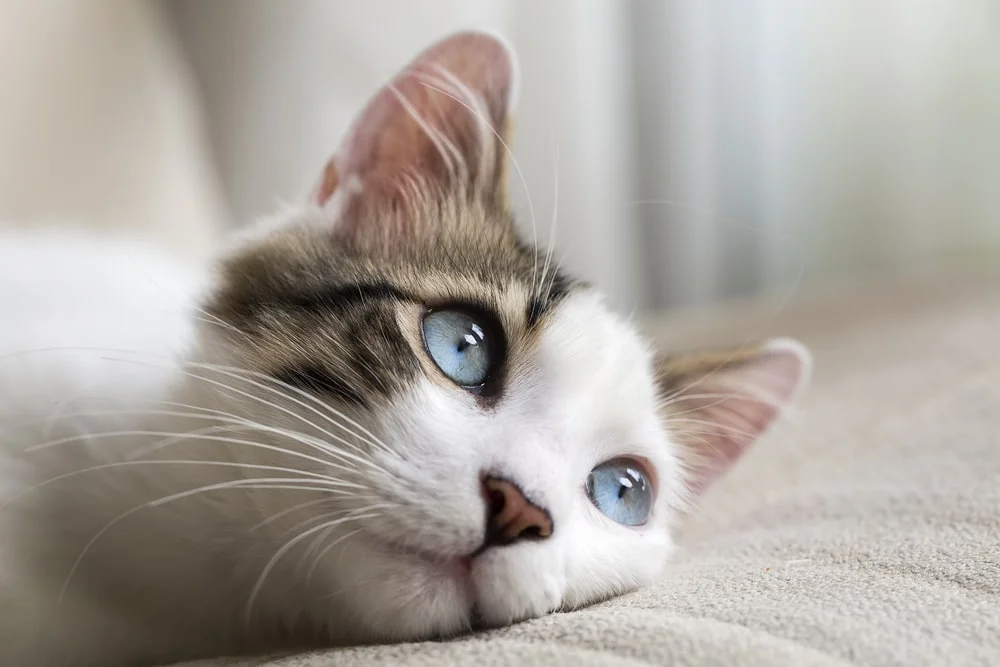PET BEHAVIOR
Cats' eyes were made to capture light. The shape, placement, and the fact that cats do not need to blink to lubricate their eyes increases a cat’s ability to see in low-light situations.
Cats require only about 1/6 the light humans need to clearly observe an object.1 These physiological differences, coupled with a cat’s keen use of other senses, allow cats to see in almost completely dark environments.
What Helps a Cat See in the Dark?
Although cats cannot see in total darkness, the structure of their eyes helps them distinguish images and movement in dim light. Five factors that play a role in this include:
1) The curved shape of the cornea and the large lens in the feline eye helps a cat’s eye take advantage of whatever light is available.2
2) The elliptical shape of a cat’s pupil can achieve a 300X increase or decrease between full dilation (wide-open in dark circumstances) to the thin line when the pupil contracts in bright light. Most humans experience a 15X increase and/or decrease in pupil size.3
3) Cats have a mirror in their eyes known as the tapetum lucidum which is a reflective layer behind the retina. Light passing through the eye bounces off this mirror-like surface giving cats a greenish-gold reflection when a flash hits their eyes.
Interesting to note, some blue-eyed and Siamese cats are born with abnormal cells in the tapetum lucidum, so their eyes may glow red instead. This may also mean that these cats do not see as well in the dark as others of their species.4
4) Cats have more rods in their eyes than humans do. Rods are the retinal receptors that react in response to light. They also aid peripheral as well as motion-sensing vision, making cats great hunters.5
5) A study done in London speculates that cats may be able to see in Ultraviolet light. Humans cannot!6 This could be your cat’s "superpower" as a huntress for seeing UV may make it easier to track urine trails of prey.
What Colors Do Cats See in the Dark?
Cats do not experience the vivid rainbow of colors that we do. Their worldview consists of mostly shades of blue-violet, greenish-yellow, and gray. The tapetum lucidum that helps your cat see in the dark reduces his or her visual acuity during the day.
Can Kittens See in the Dark?
Kittens can see in the dark as well as their parents. Generally, around 6-weeks of age, kittens begin to see the world like adult cats, and their young eyes can penetrate the darkness 6X better than we can.7
How Else Do Cats See in the Dark?
In addition to their specially constructed, light-catching eyes, a cat calls upon other senses to help them “see” in the dark.8
- Touch: Whiskers, aka “kitty radar,” help your cat detect vibrations and allow her to feel her way around her environment.
- Sound: Cats can hear pitches as high as 64GHz, an entire octave higher than a dog can. Cats can rotate their ears to pinpoint the direction of a sound.
- Scent: Although a cat’s nose has many more receptor cells than ours does, cats also can smell through their mouths! The Jacobsen’s Organ in the roof of their mouth helps cats taste scents.
Even though your cat cannot literally see in the dark, they do come close. The construction of their eyes allows more light to enter, helping them exceed a human’s sight abilities at dawn and dusk, not coincidentally, prime hunting times for predators. Additionally, cats are aided by other senses so that they can find their way, and find their prey, in low-light situation.
Consider Investing in Cat Insurance
Looking for more ways to protect your kitty? Consider investing in a cat insurance policy with MetLife Pet Insurance.1 Get your free quote today.

